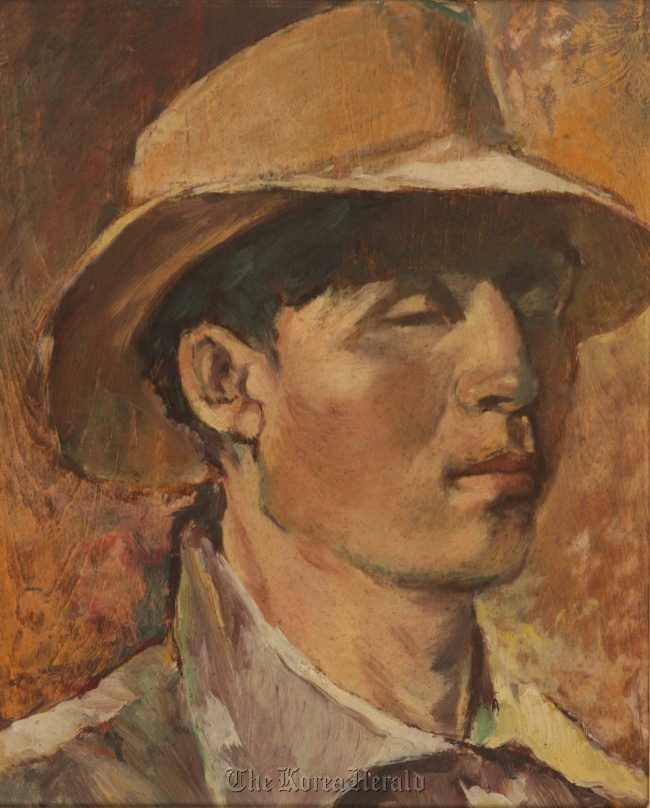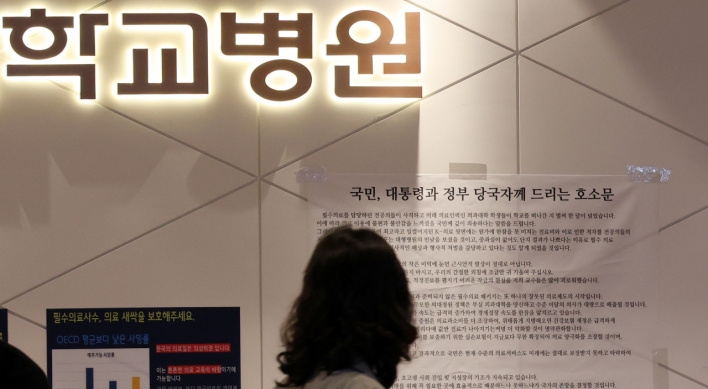Deoksu Palace art museum reopens with exhibition of works by key modern painter Lee In-sung
The reopening of the National Museum of Contemporary Art branch at Deoksu Palace last week after three-months of renovations is being marked with a rare exhibition on Korean modern art.
The exhibition of works by one of the key modern artists in Korea, Lee In-sung, celebrates the centennial of Lee’s birth, shedding new light on Lee’s short life during the Japanese colonial era.
Some 75 paintings and 200 historical records that have rarely been shown in public have been gathered for the exhibition.
In preparation, the NMOCA took out special notices in local papers in Seoul and Daegu for 10 weeks, asking the public for information on Lee’s paintings and historical records.
The museum was able get 16 paintings and other historical records about Lee from individual owners on loan this way.
In addition, a collector who has a considerable number of Lee’s paintings agreed to have pieces from his collection displayed at the exhibition.
Born and raised in Daegu, Lee was praised as a genius during 1930s and 1940s, when Korea was under the Japanese colonial rule, explained Park Su-jin, the exhibition curator.
“He sought to create colors of Joseon that are distinct from those of Japanese or Western art and realized it with the creation of a red soil color that represents the sentiment of the country,” said Park at a news conference last week.
The reopening of the National Museum of Contemporary Art branch at Deoksu Palace last week after three-months of renovations is being marked with a rare exhibition on Korean modern art.
The exhibition of works by one of the key modern artists in Korea, Lee In-sung, celebrates the centennial of Lee’s birth, shedding new light on Lee’s short life during the Japanese colonial era.
Some 75 paintings and 200 historical records that have rarely been shown in public have been gathered for the exhibition.
In preparation, the NMOCA took out special notices in local papers in Seoul and Daegu for 10 weeks, asking the public for information on Lee’s paintings and historical records.
The museum was able get 16 paintings and other historical records about Lee from individual owners on loan this way.
In addition, a collector who has a considerable number of Lee’s paintings agreed to have pieces from his collection displayed at the exhibition.
Born and raised in Daegu, Lee was praised as a genius during 1930s and 1940s, when Korea was under the Japanese colonial rule, explained Park Su-jin, the exhibition curator.
“He sought to create colors of Joseon that are distinct from those of Japanese or Western art and realized it with the creation of a red soil color that represents the sentiment of the country,” said Park at a news conference last week.

According to Park, Lee initially adopted Western painting styles, incorporating the colors and techniques of Pablo Picasso, Paul Gauguin and Paul Cezanne. But he soon developed the art skills he learned from the Western art into his own style that better illustrates Korean people and landscape.
The pristine nature and vivid colors of “On an Autumn Day,” one of his most famous paintings, recalls the strong colors and compositions of Paul Gauguin. But the painting is considered to depict well the clear autumn sky of Korea and its soil.
He also expressed the depression and pessimistic sentiment prevalent during the Japanese colonial era in oddly matched items in paintings.
In “Sweet Brier Flowers,” women wearing scarves and long sleeved dress in summer express the depression felt during the colonial era, according to Park.

Lee also left behind self-portraits with his eyes closed. The portraits of his wife and his loved ones likewise feature subjects whose eyes are closed, as if shutting themselves off from reality, a sign of self-resignation and withdrawal. Most of his portraits are in dark colors that reflect the instability felt during the turbulent years.
According to his family, one of his self-portraits with a hat on and his eyes closed was completed just a couple of days before he died on Nov. 3, 1950 at the age of 39.
He was accidentally shot dead by a police officer.
Another exhibition featuring 90 paintings created during the late Joseon period to the Japanese colonial era is being held till Dec. 2.
The Lee In-sung exhibition runs until Aug. 26 at the National Museum of Contemporary Art at Deoksu Palace. Admission is free.
The museum will also operate decent programs at designated times throughout the exhibition period.
For more information, visit www.moca.go.kr.
By Lee Woo-young (wylee@heraldcorp.com)
-
Articles by Korea Herald



![[Herald Interview] 'Amid aging population, Korea to invite more young professionals from overseas'](http://res.heraldm.com/phpwas/restmb_idxmake.php?idx=644&simg=/content/image/2024/04/24/20240424050844_0.jpg&u=20240424200058)















